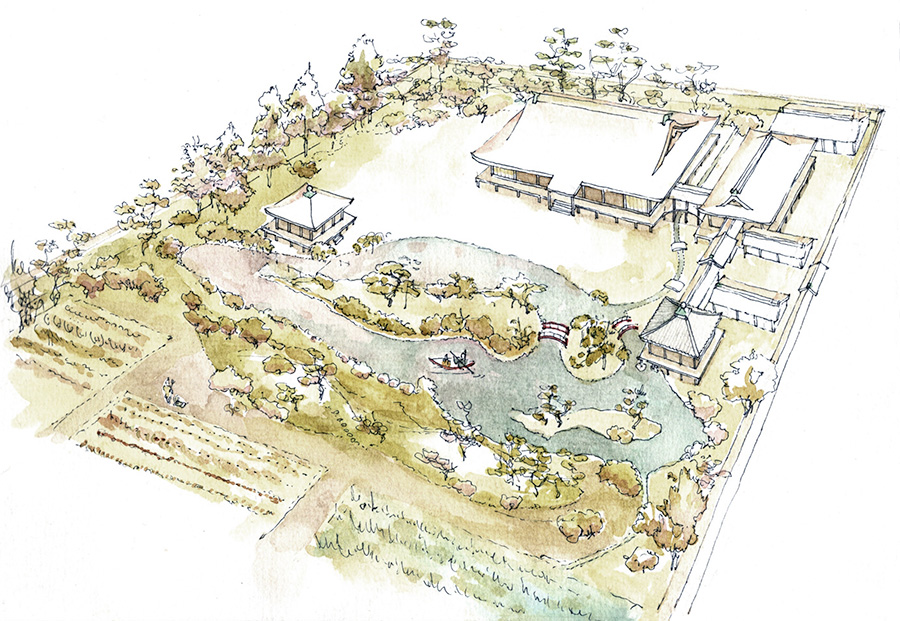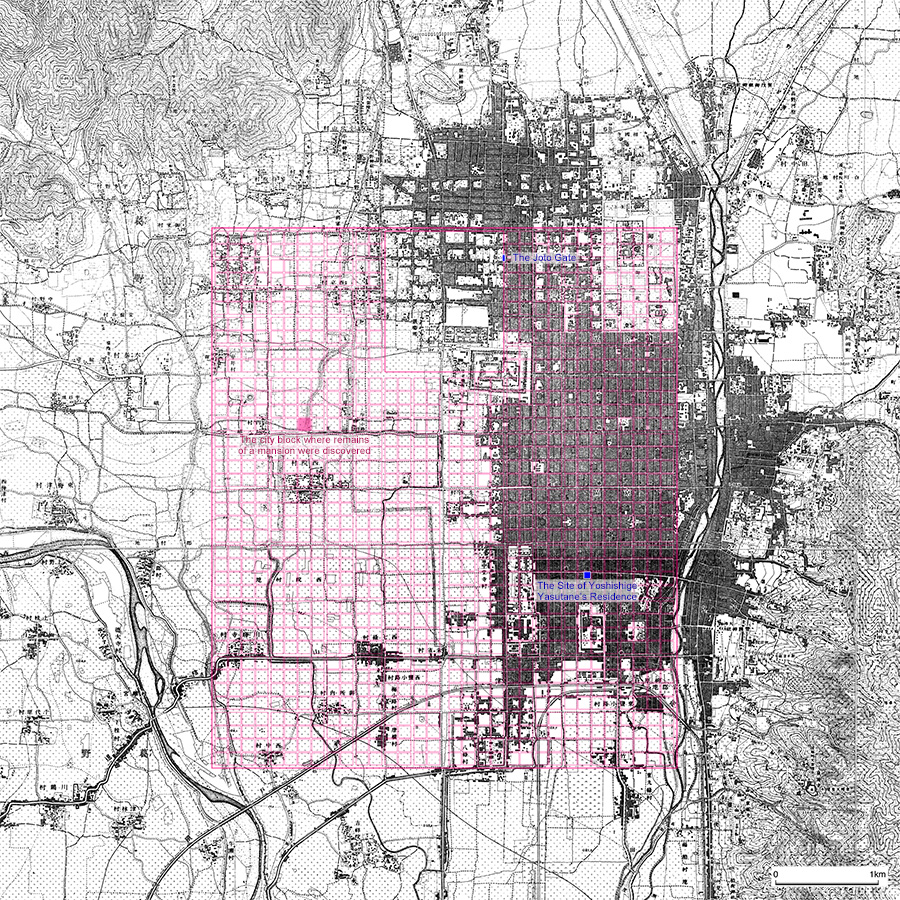Yoshishige Yasutane’s Chiteiki (My Beloved Home with a Pond) (982)
Having observed the two cities, namely the East and the West, for the last twenty years and more, I notice that the population of the West City has been declining and it has been reduced almost to ruins. People are leaving, but nobody new arrives. Houses are collapsing, but there is no new construction. Those who have no place to move to, or don’t feel ashamed of a humble life of poverty, remain. Those who enjoy a secluded life and are willing to stay in rural surroundings don’t leave. However, those who are eager to become rich and successful in business find it unbearable to remain in the city for even one day. Once upon a time, there was a mansion in the West City with gorgeous buildings and a magnificent garden. After its master [Minamoto Taka-akira] was exiled from the capital, that mansion was destroyed by fire. Dozens of followers inhabiting this neighborhood left. Although the master was permitted to return later on, he never restored his mansion. He had many offspring; however, they did not live there for long. The land upon which that mansion once stood is overgrown with weeds and inhabited by foxes and raccoons. It seems that the fate of the West City was decided by the heavens, not caused by human faults.
In the East City, northward from Shijo [the Fourth] street, in the northwestern and northeastern directions, a great many people of all classes live. Mansions of noblemen contend their scales while small huts are built closely together. If a fire breaks out in the eastern neighbor’s house, the western neighbor’s house also catches fire. If the southern neighbor’s house suffers a robbery, the northern neighbor cannot avoid arrows. Some people are poor, others are rich; and while the rich are not necessarily virtuous, the poor feel ashamed of their poverty. The neighbors of a powerful family feel inferior, and can neither restore their damaged houses, nor build their broken fences. They hesitate to laugh even when they feel happy and hesitate to cry even when they feel sad. They feel nervous about their own behavior, much like sparrows watched by a hawk. When a powerful family builds a mansion, poor people are evicted and complain in vain. It is in this way that people are deported from their homeland or moved from paradise to the real world. In extreme cases, poor families die out after losing their land. If you choose to live by the side of the East [Kamo] River [outside the eastern city boundary] and floods occur, fish and turtles will enter your house. If you choose to live in the northern suburbs and there is a drought, you will be unable to get water. Do you say there is no space inside the two cities? How are people so selfish?
 |
Reconstructed image of Yoshishige Yasutane’s residence based on the description in Chiteiki. Illustration by Fumi Kashimura. |
Initially, I didn’t have a home, so I had rented a room in a house near the Joto gate. I always considered my family finance and refrained from owning a house. Even if I were to wish to own a house, it would be impossible because land prices are so high there. Subsequently, I chose a parcel of vacant land north of Rokujo [the Sixth] street, and built fences along the four sides and opened a gate. It was my choice of secluded living just like Prime Minister Xiao [of the Western Han Dynasty] and Zhong Zhangtong [of the Eastern Han Dynasty]. The area of the land parcel is about ten [units]. Within that, I piled up earth to make a miniature hill and hollowed out a patch to make a small pond. I built a small temple west to the pond and enshrined an image of Amitabha Buddha. Further, I put a small library east to the pond and kept my collection of books in it. Finally, I built a low house north to the pond, and my wife and children lived there. The buildings covered four tenth [of the land parcel], the pond covered three ninth, the garden covered two eighth, and the field of water dropwort covered one seventh. The pond was ornamented by an islet with a green pine tree, edge of white sand, red carp, white herons, small bridge, and a small boat. These are my beloved items. In spring, fresh green leaves of willow trees on the east side give a hazy view. In summer, we hear comfortable rustle of the north side bamboo thicket in the wind. In autumn, the moon gives us a clear view from the west-side windows. In winter, I enjoy sunbathing in the south-side corridor.
…
As for the society in recent years, I don't have interest in it at all. As for teachers, they place importance on the social status and wealth while make little of literary knowledge. I would like to do without teachers. As for friends, they place emphasis on power and profit while they do not communicate frankly. I would like to do without friends. I close the gate and shut the door, and compose a poem and recite it alone. When I wish to have a joyful time, I get on the boat with my child, and tap its sides and swing its oars. When I want to have a leisurely time, I get the servant in my garden to manure and water it. I love my home, and don’t know others’ (homes)…
